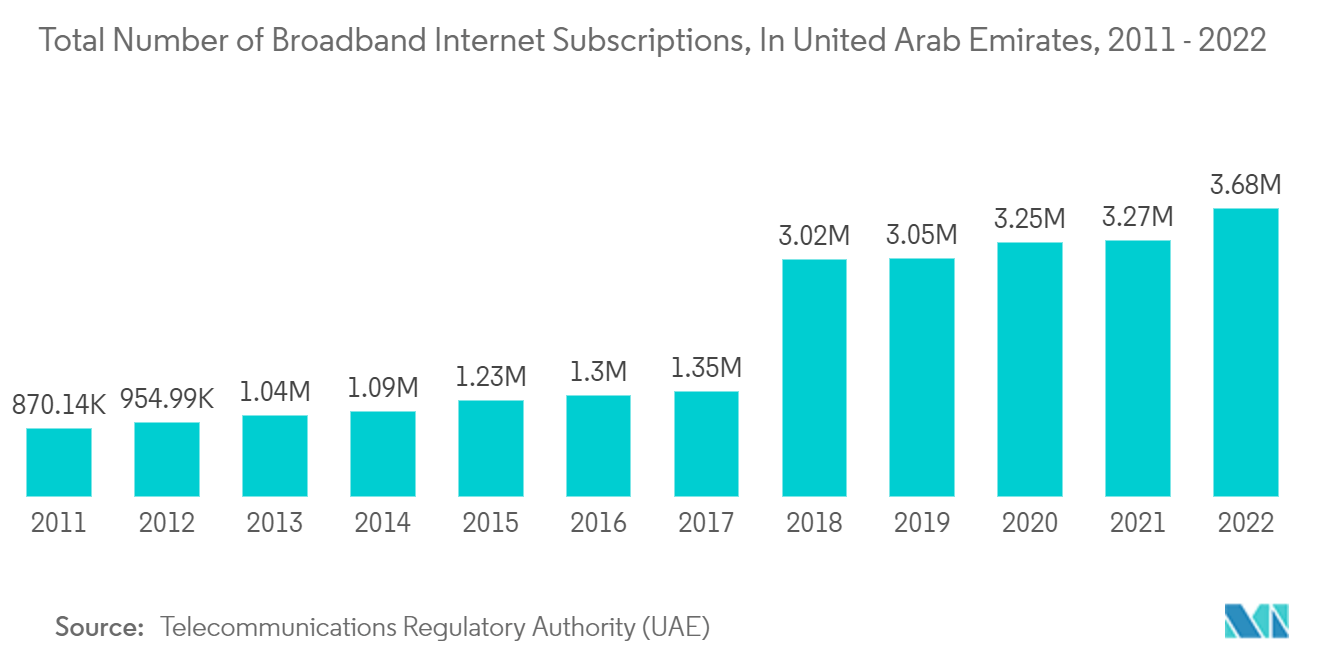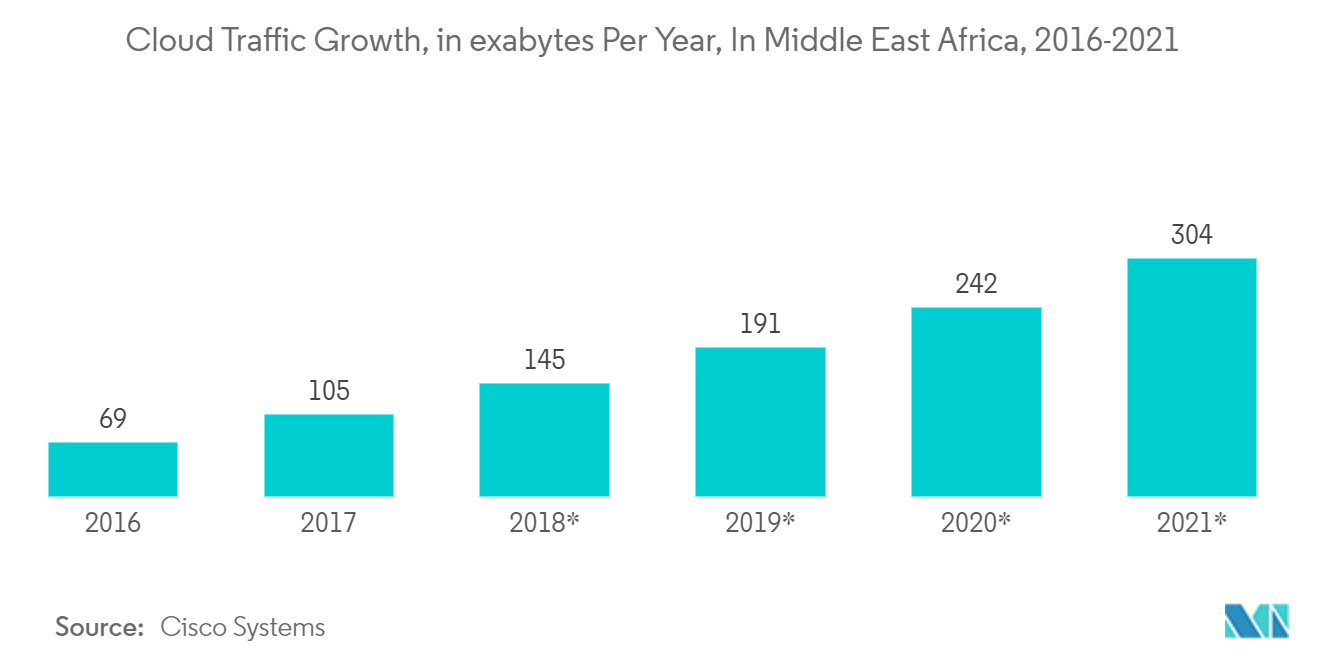Market Trends of Middle East and Africa SSD Caching Industry
This section covers the major market trends shaping the MEA SSD Caching Market according to our research experts:
Enterprise Storage Expected to Hold Major Share
- Servers are typically configured with banks of hard disc drives (HDD) or connected to storage area networks (SANs), which are large banks of hard drives. In the business storage network, improvements in server technology caused an I/O performance gap. SSD-based caching closes the I/O performance gap by lowering I/O latency and enhancing IOPS performance. Server-based caching does not necessitate storage array upgrades or the installation of any other appliances in the data path of important networks. SSD caching in servers effectively reduces the requirement for storage networks and arrays by servicing large percentages of the I/O demand of important servers at the network edge. This decrease in demand improves storage performance for other associated servers, potentially extending the storage infrastructure's useful life.
- In a corporate environment, SSD caching stores previously requested data as it passes through the network, allowing it to be retrieved fast when needed. Placing previously requested material in temporary storage lessens the demand on an enterprise's bandwidth and speeds up access to the most up-to-date information. Enterprise SSDs store data permanently or momentarily cache data in nonvolatile semiconductor memory. NAND flash memory is used in these SSDs, providing better performance and less power than spinning HDDs. SSD caching is becoming more important as the demand for computing speed rises across various industries in the MEA region. As a result, many companies have entered the SSD cache market. This resulted in a decrease in the cost of SSD caches.
- Data-center applications in various businesses are processing an expanding volume of data sets. The page cache's caching impact is hampered by its low capacity. Compared to hard discs and DRAM, emerging flash-based SSDs provide lower latency and costs. As a result, SSD-based caching is commonly used in data centers. According to the worldwide cloud index, data center traffic has increased data storage requirements. Because of its high-performance features, the high-traffic data center will increase demand for SSD caching. SSD caching allows data centers and cloud computing environments to host more users and complete more transactions per second by accelerating input/output operations per second (IOPs) and reducing latency.
- Maintaining investments, on the other hand, is the most difficult task. Due to the pandemic, company and customer workloads have increased dramatically, necessitating a careful balance between protecting existing investments and buying the appropriate cloud storage to meet the increasing demand. Furthermore, organizations have faced additional problems upskilling their current workforces, as cloud adoption necessitates certain skills and knowledge to ensure effective migrations to new platforms.
- The rapid expansion of Internet-connected users and an expanding number of SMEs and cloud service suppliers has created tremendous growth opportunities across the region, where interconnection bandwidth is accelerating due to strong demand. According to Telecommunications Regulatory Authority (UAE), as of March this year, there were around 3.67 million broadband internet subscriptions in the United Arab Emirates.

Demand for the Cloud Storage Driving the Market Growth
- Hybrid cloud technologies have reached a high level of maturity in the industry, allowing clients to operate workloads in a hybrid environment while guaranteeing that they are exploiting the cloud without disrupting business operations (e.g., AWS Outpost, Azure Stack & Google Anthos). Cloud platforms enabled new, complex business models and have been orchestrating more global-based integration networks in recent years. The deployment of storage solutions over the cloud offers greater convenience, as the service vendor is solely responsible for providing maximum uptime, data security, and periodic updates, thus, decreasing the total cost of ownership.
- The need to reduce latency by moving data closer to the customer and governmental and business regulations for data to be kept locally within different areas are projected to drive growth in cloud storage in the MEA region. Enterprises in the region installing complex cloud infrastructures want systems that can quickly store, retrieve, process, and analyze large amounts of business-critical data. As a result of this demand, many firms in the Middle East and Africa are switching from SATA-based SSDs to NVMe-based SSDs for primary storage. The latest NVMe SSDs include caching capabilities. The data center sector is rapidly expanding, with a greater emphasis on efficiency and maximum uptime.
- In addition, the cloud acts as a catalyst for IT transformation, providing the flexibility to combine the preferred clouds and existing on-premises infrastructure in the ratio best suited for the workload. According to Cisco Systems, This year, cloud traffic in the Middle East and Africa would amount to an estimated 304 exabytes.
- Furthermore, the rising focus on cost optimization and business agility has led to the expansion of cloud data centers. Also, cloud services adapt easily to the changing landscape to meet new requirements. This allows the client organization to focus on its core competency, which, in turn, results in its overall growth.
- With unstructured data expanding by more than 50% annually, managed service providers are looking at cloud storage as an upfront revenue opportunity. The greater need for storage control further augmented this. The foray into advanced technologies prompts companies to emphasize updating their storage system to match the competition. The hybrid cloud is one such trend that significantly boosts the market growth. However, security and the need for more network bandwidth for data transfer can challenge the development of the market.


